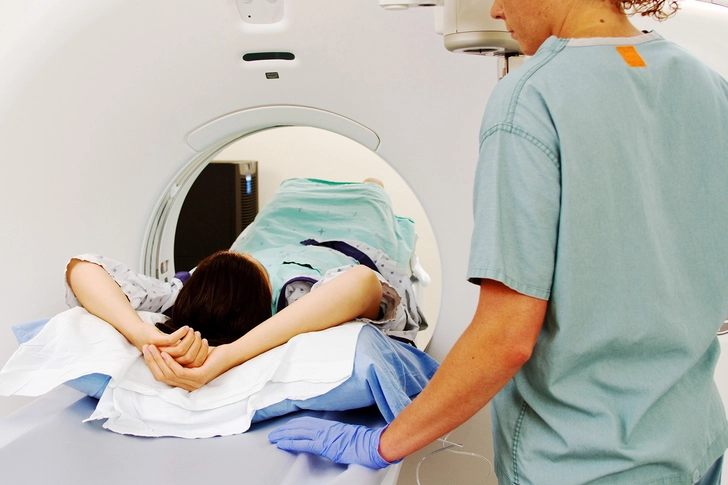Diaphragmatic Endometriosis: Causes, Symptoms, and Treatment


What Is Diaphragmatic Endometriosis?
Diaphragmatic endometriosis is a rare form of endometriosis. Generally, endometriosis happens within the pelvic cavity, but sometimes it happens outside of the pelvis. In diaphragmatic endometriosis, endometrial tissue attaches to the diaphragm, a muscle that helps you breathe.

Causes of Diaphragmatic Endometriosis
The exact cause of endometriosis is still unknown, but there are several theories as to why it occurs. The most common theory is the backward flow of menstrual blood, also known as retrograde menstruation. This allows endometrial cells to travel throughout the body, including the diaphragm, and implant there. Hormones and immune system issues may also contribute to diaphragmatic endometriosis.

Recognizing the Symptoms
Nearly 70% of people with diaphragmatic endometriosis do not have symptoms. For those who do, the most common symptom is pain in the chest, upper abdomen, shoulder, or ribs that worsens during menstruation. Other symptoms may include nausea, vomiting, and difficulty breathing.

Diagnosing Diaphragmatic Endometriosis
Diagnosing diaphragmatic endometriosis can be challenging as it is often misdiagnosed or overlooked. Often, people will go undiagnosed for years, causing their symptoms to worsen and potentially lead to complications. Many doctors only check for endometriosis in the pelvis, but research suggests there’s a 50%-90% chance that if you have pelvic endometriosis, you may also have it in the diaphragm. It's important to find a doctor who’s familiar with the condition and will do imaging tests on both areas.

Treatment Options
There are two main treatments for diaphragmatic endometriosis: medication and surgery. Hormone therapy, such as birth control pills or GnRH antagonists, can help manage symptoms. But surgery is often the most effective way to remove lesions and relieve pain. Discuss treatment options with your doctor to choose the best course of action.

Risks and Outlook
As with any medical procedure, there are risks involved with surgery for diaphragmatic endometriosis. These include damage to surrounding organs or nerves. But a skilled medical team can reduce these risks, and most people experience relief after surgery.

Seeking Support and Resources
Living with a chronic condition like diaphragmatic endometriosis can be challenging, both physically and emotionally. Support groups, online communities, and educational resources can provide valuable information and a sense of understanding if you’re struggling with symptoms. Always consult with a medical professional if you have any concerns or symptoms about endometriosis.
IMAGES PROVIDED BY:
Slide 1: Science Photo Library/Getty Images
Slide 4: Moment/Getty Images
Slide 5: iStock/Getty Images
Slide 6: iStock/Getty Images
Slide 9: iStock/Getty Images
Other Slides: Shutterstock
SOURCES:
Cleveland Clinic: “Diaphragmatic Breathing.”
Journal of the Turkish-German Gynecological Association: “Thoracic and diaphragmatic endometriosis: Single-institution experience using novel, broadened diagnostic criteria.”
International Journal of Fertility & Sterility: “Endometriosis of Diaphragm: A Case Report.”
RadiologyInfo.org: “Computed Tomography (CT).”
Human Reproduction: “Asymmetry in distribution of diaphragmatic endometriotic lesions: evidence in favour of the menstrual reflux theory.”
EndoNews (Endometriosis Foundation of America): “Diaphragmatic endometriosis.”
Mayo Clinic: “Endometriosis.”
Journal of Obstetrics and Gynaecology: “Diaphragmatic endometriosis minimally invasive treatment: a feasible and effective approach.”